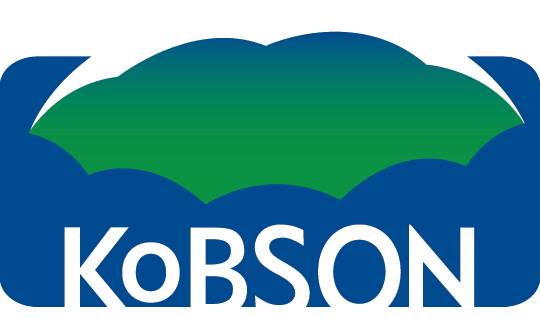This research aims to assess the impact of light buses on mobility and time delays. Extended wait times and unfavourable environmental factors lead to traffic jams and negative economic impacts. One suggestion is to relocate these minibuses to the bus rapid transit (BRT) lane. Three crossroads that are connected by a corridor were included in the analysis. The crossroads under consideration are the University of Jordan intersection, the Sweileh intersection, and the intersection of external patrols. Vissim simulation software is used for the evaluation and analysis, using data from detectors data at crossings. As a result of shorter wait times and shorter lines, both the simulation and the collected findings demonstrated an overall improvement in mobility. The environment would benefit from such an upgrade. The inclusion of light buses does, nonetheless, cause a little delay on the BRT lane; however, this is offset by an overall improvement in the mobility of all traffic at each crossing. Improved quantitative assessment of the dynamic traffic at each crossing was made possible based on simulation. The results generated by this study demonstrated intricate traffic interaction models (involving Sweileh, outside patrols, and the University of Jordan), which might be applied during the design phase of upcoming construction projects near these crossings.
1.
Afrin, T., Yodo, N. (2020). A
Survey of Road Traffic Congestion Measures towards a Sustainable and Resilient
Transportation System. sustainability, vol. 12, no. 4660, 1-23, DOI: 10.3390/su12114660.
2.
Noor, A., Ashrafi, S., Fattah,
A., Morshed, S., Rahman, S. (2021). Assessment of traffic congestion scenario
at the CBD areas in a developing city: In the context of Khulna City,
Bangladesh. Transportation Research Interdisciplinary Perspectives, vol. 11,
no. 100435, 1-11, DOI: 10.1016/j.trip.2021.100435.
3.
Sokido, D. (2024). Measuring
the level of urban traffic congestion for sustainable transportation in Addis
Ababa, Ethiopia, the cases of selected intersections. Front. Sustain. Cities,
vol. 6, no. 1366932, 1-18, DOI: 10.3389/frsc.2024.1366932.
4.
Albalate, D., Fageda, X.
(2019). Congestion, Road Safety, and the Effectiveness of Public Policies in
Urban Areas. sustainability, vol. 11, no. 5092, 1-21, DOI: 10.3390/su11185092.
5.
Huang,
K., Zhu, T., An, K., Liu, Z., Kim, I. (2019). Analysis
of the acceptance of park-and-ride by users: A cumulative logistic regression
approach. Journal of Transport and Land Use, vol. 12, no. 1, 637-647, DOI:
10.5198/jtlu.2019.1390.
6.
Clayton, B. (2014). Where to
park? A behavioural comparison of bus Park and Ride and city centre car park
usage in Bath, UK. Journal of Transport Geography, vol. 36c, no, 124-133, DOI:
10.1016/j.jtrangeo.2014.03.011.
7.
Merkert,
R., Mulley, C., Hakim, M. (2017). Determinants of bus
rapid transit (BRT) system revenue and effectiveness – A global benchmarking
exercise. Transportation Research Part A, vol. 106, no.207, 75-88, DOI:
10.1016/j.tra.2017.09.010.
8.
Hidalgo,
D., Giesen, R., Muñoz, J. (2023). Bus Rapid Transit:
End of trend in Latin America?. Data & Policy, vol. 6, no. e2, 1-18, DOI:
10.1017/dap.2023.44.
9.
Shirgaokar, M. (2014).
Employment centers and travel behavior: exploring the work commute of Mumbai’s
rapidly motorizing middle class. Journal of Transport Geography, vol. 41,
no.2014, 249−258, DOI: 10.1016/j.jtrangeo.2014.10.003.
10.
Shin, E. (2019).
Self-employment and travel behavior: A case study of workers in central Puget
Sound. Transport Policy, vol. 73, no. 2019, 101-112, DOI:
10.1016/j.tranpol.2018.11.002.
11.
Ma,
L., Liu, Y., Sun, X., Ye, R. (2024). Impact of
commuting time on self-reported work productivity: A quasi-longitudinal
examination. Travel Behaviour and Society, vol. 37, no. 100837, 1-15, DOI:
10.1016/j.tbs.2024.100837.
12.
Qin, X., Yang, H., Liu, W.
(2024). Upgrading in ride-sourcing markets with multi-class services. Travel
Behaviour and Society, vol. 37, o. 100845, 1-12, DOI:
10.1016/j.tbs.2024.100845.
13.
Bautista-Hern´andez, D. (2021).
Mode choice in commuting and the built environment in M´exico City. Is there a
chance for non-motorized travel? Journal of Transport Geography, vol. 92, no.
103024, 1-10, DOI: 10.1016/j.jtrangeo.2021.103024.
14.
Guerra, E., Li, M. (2021). The
relationship between urban form and mode choice in US and Mexican cities: A
comparative analysis of workers’ commutes. Journal of Transport and Land Use,
vol.14, no.1, 441-462, DOI: 10.1016/j.jtrangeo.2021.103024.
15.
Elias, W., Shiftan, Y. (2012).
The influence of individual’s risk perception and attitudes on travel behavior.
Transportation Research Part A, vol. 46, no. 2012, 1241−1251, DOI:
10.1016/j.tra.2012.05.013.
16.
Kemmerer,
P., Brach, B., Kubiak, T., Singer, S., Gianicolo, E. (2023). Association of risk perception and transport mode choice during the
temporary closure of a major inner‑city road bridge: results of a cross‑sectional study. European Transport Research Review, vol. 15, no.
34, 1-15, DOI: 10.1186/s12544-023-00608-y.
17.
Hrelja, R., Olsson, L.,
Pettersson-Löfstedt, F., Rye, T. (2022). Challenges of delivering TOD in low‑density contexts: the Swedish experience of barriers and enablers.
European Transport Research Review, vol. 14, no. 20, 1-48, DOI:
10.1186/s12544-022-00546-1.
18.
Kwasniewski, J., Ewing, R.,
Sabouri, S., Ameli, H. (2021). Is transit-oriented development affordable for
low- and moderate-income households?. Cities, vol. 147, no. 104772, 1-12, DOI:
10.1016/j.cities.2023.104772.
19.
Asimeng, E. (2021). Bus rapid
transit implementation with the inclusion of incumbent paratransit operators in
African cities: lessons from Accra. Urban, Planning and Transport Research,
vol. 9, no. 1, 534-548, DOI: 10.1080/21650020.2021.2000485.
20.
Asimeng, E., Asabere, S.
(2022). Factors that determine paratransit drivers’ willingness to participate
in formal bus services in an African city. Case Studies on Transport Policy,
vol. 10, no. 2, 1343-1352, DOI: 10.1016/j.cstp.2022.04.015.
21.
Venter, C. (2016). Assessing
the potential of bus rapid transit-led network restructuring for enhancing
affordable access to employment -The case of Johannesburg's Corridors of
Freedom. Research in Transportation Economics, vol. 59, no. 2016, 441-449, DOI:
10.1016/j.retrec.2016.05.006.
22.
Egger,
S., Gantschnig, B., Filippo, M., Liechti, R., Gemperli, A. (2024). Cost and financing of paratransit services and their effect on
dissatisfaction with participation in daily activities of persons with
disabilities. Journal of Transport & Health, vol. 38, no. 101856, 1-9, DOI:
10.1016/j.jth.2024.101856.
23.
Tun, T., Welle, B., Hidalgo,
D., Albuquerque, C., Castellanos, S., Sclar, R., Escalante, D. (2020). Informal and Semiformal Services in
Latin America: An Overview of Public Transportation Reforms. World Resources Institute,
vol. 2020, no. 2020, 1-73, DOI: 10.18235/0002831.
24.
Rodriguez‑Valencia, R., Rosas‑Satizábal, D.,
Hidalgo, D. (2023). Big effort, little gain for users: lessons from the public
transport system reform in Bogotá. Public Transport, vol. 15, no. 2023, 411-433,
DOI: 10.1007/s12469-022-00308-1.
25.
Schalekamp, H., Behrens, R.
(2010). Engaging paratransit on public transport reform initiatives in South
Africa: A critique of policy and an investigation of appropriate engagement
approaches. Research in Transportation Economics, vol. 29, no. 2010, 371-378,
10.1016/j.retrec.2010.07.047.
26.
Klopp, J., Cavoli, C. (2019).
Mapping minibuses in Maputo and Nairobi: engaging paratransit in transportation
planning in African cities,” Transport Reviews, vol. 39, no. 5, 657-676, DOI:
10.1080/01441647.2019.1598513.
27.
Phun,
V., Kato, K., Yai, Y. (2018). Traffic risk perception
and behavioral intentions of paratransit users in Phnom Penh. Transportation
Research Part F, vol. 55, no. 2018, 175-187, DOI: 10.1016/j.trf.2018.03.008.
28.
Joewono, T., Matthew, A.,
Rizki, M. (2021). Loyalty of Paratransit Users in the Era of Competition with
Ride Sourcing. sustainability, vol. 13, no. 12719, 1-20, DOI:
10.3390/su132212719.
29.
Ojo, T. (2019). Quality of
public transport service: an integrative review and research agenda,”
Transportation Letters, vol. 11, no. 2, 104-116,
DOI:10.1080/19427867.2017.1283835.
30.
Ukam, G., Adams, C., Adebanji,
A., Ackaah, W. (2023). Investigating factors affecting Paratransit Travel
Times: Perspectives from two Paratransit Routes in Kumasi, Ghana. E3S Web of
Conferences, vol. 418, no. 02008, 1-6, DOI: 10.1051/e3sconf/202341802008.
31.
Delmelle, E., Casas, I. (2012).
Evaluating the spatial equity of bus rapid transit-based accessibility patterns
in a developing country: The case of Cali, Colombia. Transport Policy, vol. 20,
no. 2012, 36-46, DOI: 10.1016/j.tranpol.2011.12.001.
32.
Shah, S., Shahzad, M., Ahmad,
N., Zamad, A., Hussan, S., Aslam, M., Khan, A., Asif, A., Shahzadi, G., Waseem,
M. (2020). Performance Evaluation of Bus Rapid Transit System: A Comparative
Analysis of Alternative Approaches for Energy Efficient Eco-Friendly Public
Transport System. energies, vol. 13, no. 1377, 1-15, DOI: 10.3390/en13061377.
33.
Levinson, H. (2002). Bus Rapid
Transit: An Overview. Journal of Public Transportation, vol. 5, o. 2, 1-30,
DOI: 10.5038/2375-0901.5.2.1.
34.
Zannat, K., Laudan, J.,
Choudhury, C., Hess, C. (2024). Developing an agent-based microsimulation for
predicting the Bus Rapid Transit (BRT) demand in developing countries: A case
study of Dhaka, Bangladesh. Transport Policy, vol. 148, no. 2024, 92-106, DOI:
10.1016/j.tranpol.2023.12.014.
35.
Borsje,
R., Mastrigt, S., Veeneman, W. (2023). Assessing
passenger preferences for Bus Rapid Transit characteristics: A discrete choice
experiment among current and potential Dutch passengers. Research in
Transportation Economics, vol. 100, no. 101307, 1-12, DOI:
10.1016/j.retrec.2023.101307.
36.
Amritha, G., Akkara, J. (2024).
Exploring the Impact of Bus Rapid Transit System on Accident Reduction: A
Review of Literature. IJIRSET, vol. 13, no. 6, 11685-11688, DOI:
10.15680/IJIRSET.2024.1306190.
37.
Vecino-Ortiz, A., Hyder, A.
(2015). Road Safety Effects of Bus Rapid Transit (BRT) Systems: a Call for
Evidence. Journal of Urban Health:
Bulletin of the New York Academy of Medicine, vol. 92, no. 5, 940-946, DOI: 10.1007/s11524-015-9975-y.
38.
Izadi, A., Jamshidpour, F.,
Safari, D., Najafi, V., Gilani. (2020). Accident Analysis of Bus Rapid Transit
System: Before and after construction. Scientific Reports, vol. 79, no. 9,
1-18, DOI: 10.48295/ET.2020.79.9.
39.
Ajayi, A. (2017). Assessment of
the Influence of Lagos Bus Rapid Transit Scheme (BRT-Lite) on Road Traffic
Crashes (RTC) on Lagos Mainland-Island Corridor. The Open Transportation
Journal, vol. 11, no. 2017, 102-109, DOI: 10.2174/1874447801711010102.
40.
Alnsour, M. (2023). Assessment
of risks affecting the operational activities of the Amman bus rapid transit
(BRT) system. Alexandria Engineering Journal, vol. 78, no. 2023, 265-280, DOI:
10.1016/j.aej.2023.07.036.
41.
Shbeeb, L. (2023). Traffic and
environmental impacts of constructing and operating a BRT service: Case study
in Amman, Jordan. Cogent Engineering, vol. 10, no. 2283316, 1-34, DOI:
10.1080/23311916.2023.2283316.
42.
Imam,
R., Kang, S., Quezada, D. (2020). Exploring Low-Carbon
Bus Options for Urban BRT Systems: The Case of Amman. Journal of Public
Transportation, vol. 22, no. 1, 57-75, 10.5038/2375-0901.22.1.4.
43.
Gharaibeh,
L., Matarneh, S., Lantz, B., Eriksson, K. (2024). Quantifying
the influence of BIM adoption: An in-depth methodology and practical case
studies in construction. Results in Engineering. vol. 23, no. 10255, 1-13, DOI:
10.1016/j.rineng.2024.102555.
44.
Matarneh, S. (2024).
Construction Disputes Causes and Resolution Methods: A Case Study from a
Developing Country. Journal of Construction in Developing Countries, vol. 29,
no. 1, 139-161, DOI: 10.21315/jcdc-04-23-0043.








